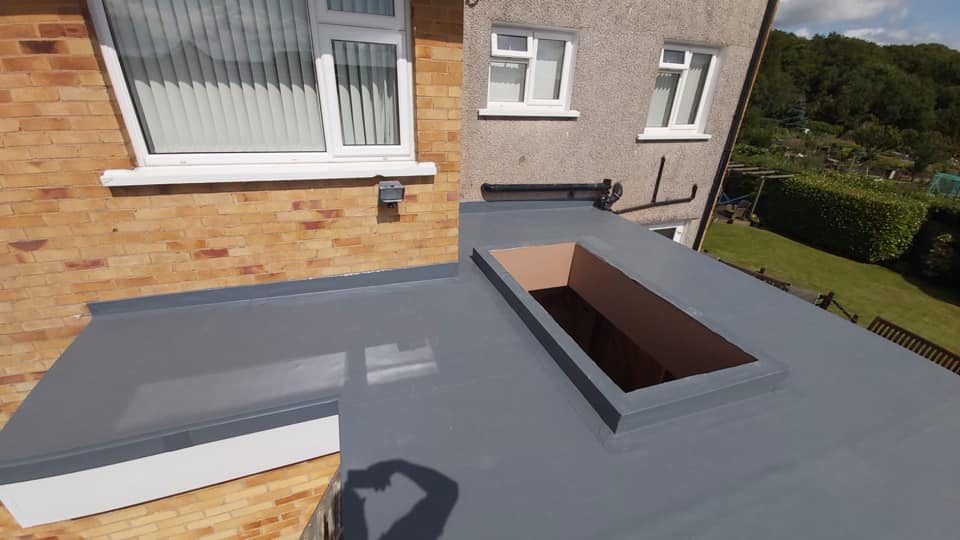With the weather becoming colder and the seasons changing, it’s important that your home is prepared for the increased rain, ice and snowfall that comes with winter.
In particular, flat roofs need to be prepared for the unique conditions of winter, as they need to be protected from the elements. Readying your flat roof for winter stops short-term problems such as leaks or condensation, while also prolonging the structural integrity of your flat roof for many years to come.
Here’s how to make your flat roof ready for winter.
Remove Debris from the Roof
Flat roofs accumulate heaps of debris over the course of the year, as leaves and twigs can’t simply slide off or be washed off the roof (not like a traditional slanted roof).
It’s important that this debris is cleared away before winter arrives, because the debris stops rainwater from draining away and causes it to pool on top of the flat roof. This problem is exacerbated in winter, as there’s more rainfall.
Heavy pools of water can eventually leak through, or worse cause the roof to collapse under the weight of both water and debris. The pools of water can freeze too, weighing the roof down further, giving yet another reason to clear the debris to prepare your flat roof for winter.
Remove Debris from Guttering and Drain Pipes
It’s just as important to have your gutters and drains cleared of debris too. In order for the roof to do its job properly, you need all its component parts winter-ready.
Gutters and drains allow water to be channelled away from the rooftop, stopping pooling and helping you to avoid leaks. If they are blocked up with debris, that can’t happen.
Common debris includes leaves and twigs, but you might also find your gutters have become home to moss, vegetation, or even birds and small animals.
Check for Holes in Seals
Flat roofs have a waterproof membrane that protects it from the elements, so you need to check that this membrane or outer coating is doing its job and is still waterproof.
You can visually inspect your flat roof for any obvious holes in the seals, or for any cracks or damage to the outer coating.
If you find any holes, then you need to have your flat roof re-waterproofed or the holes patched before it starts to rain heavily. Otherwise, you’ll find that rainwater quickly starts to leak through the holes and into your home.
Clear Snow During the Winter Season
You need to make sure your flat roof stays ready during winter, and this means carrying out necessary maintenance during the winter season. It’s particularly important to check for any damage after heavy storms, heavy rainfall and when it snows.
Heavy snowfall can weaken the roof if not cleared away, as the extra weight puts a strain on the roof’s structure. If the snow melts, it can pool or cause leaking too. To avoid this, it’s best to remove the snow as soon as you can after it’s fallen (as long as it’s safe for you to do so).
Watch Out for Freeze-Thaw
Freeze-thaw is a common problem in the dead of winter when varying temperature changes can cause damage to your flat roof.
Freeze-thaw occurs when water manages to seep into cracks or holes in the roof. The water freezes when it’s cold enough, but when the temperatures rise later in the day or the roof gets more direct sunlight the ice melts.
Over time, this freeze-thaw effect causes the cracks or holes in the roof to widen. When the water freezes it expands, and as the process is repeated through the winter even minor gaps can become much larger.
The best way to avoid damage from freeze-thaw is to regularly inspect your roof for cracks, gaps and holes where it could occur.
Keep Your Home Well Ventilated
One commonly overlooked cause of problems during the winter is condensation. This occurs when the home isn’t well ventilated, causing moisture to form in areas such as windows and attics.
A build-up of condensation can severely undermine the support structures holding up the roof, leading to cracks in the inner layer that separates the roof from the home itself.
This can lead to leaks, or even to collapses in severe cases. Condensation can be easily controlled though, simply by leaving windows open (yes, even in winter), or setting up a dehumidifier to regulate the conditions inside the home.
Have a Professional Roof Inspection Carried Out
While you can carry out many of these minor maintenance tasks yourself, such as clearing your gutter or ventilating your home, it’s always good to have the opinion of a professional roof inspector.
In fact, many insurance companies often make it a requirement that flat roofs have regular inspections carried out by roof surveyors. While you might notice major problems yourself, a professional will notice minor problems before they spiral out of control, giving you the chance to make repairs rather than replacements.
Professional roofers know what to look for and where they might find existing damage, making them a worthy investment before winter arrives with the full force of rain, sleet, ice and snow behind it.
Act Before the Worst of Winter Arrives
Finally, you need to make sure that you have your roof inspected and any repairs carried out before winter arrives. It’s easy to forget about maintenance problems when it’s hot and sunny, but cleaning your gutters and re-sealing your waterproofing is a lot harder to do when it’s already raining or your flat roof is iced over.
The best time to prepare your flat roof for winter is in summer when any repair work can be easily completed. In autumn, an inspection can uncover any other last-minute problems and give you the chance to make a final sweep of all that autumnal debris before winter arrives.
Remember, regular repair and maintenance is the best way to care for your flat roof and to keep it winter-ready all the time!



